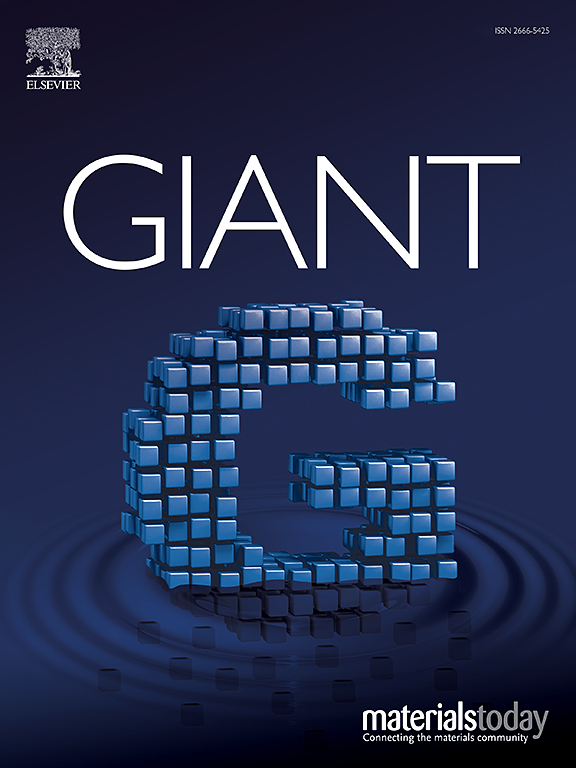Structure evolution of PVDF/PBSU interpenetrating crystal frameworks during deformation investigated by in-situ synchrotron radiation SAXS/WAXS
IF 4.9
1区 化学
Q2 CHEMISTRY, MULTIDISCIPLINARY
引用次数: 0
Abstract
The structure evolution of interpenetrating crystal frameworks during deformation has been investigated with the help of in-situ small angle X-ray scattering (SAXS) and wide-angle X-ray scattering (WAXS) by taking poly(vinylidene fluoride)/poly(1,4-butylene succinate) (PVDF/PBSU) blend as an example. During deformation, crystal slip, fragmentation and recrystallization of PVDF occur, leading to the formation of its fibrillar structures and the newly-formed PVDF crystalline lamellae with their normal parallel to stretching direction. In this process, the enriched chains or crystals of PBSU are reorganized accompanying the structure evolution of PVDF and finally enrich among newly-formed PVDF fibrils. The phase segregation and consequent connection of crystalline lamellae, dominated by the composition in blends, play important roles in the structure evolution of PVDF/PBSU interpenetrating crystal frameworks. On the one hand, higher PBSU content in blend contributes to the poor connection and weakens stress transfer among neighboring PVDF crystalline lamellae, corresponding to the larger critical strains for lamellar-to-fibrillar transition and α-to-β transformation of PVDF. On the other hand, higher PBSU content also leads to its lamellar stack in PVDF crystal framework. The fragmentation and recrystallization of these well-connected PBSU crystals yield newly-formed PBSU crystalline lamellae with their normal parallel to the stretching direction. On the contrary, the well connection of PVDF crystalline lamellae in the case of lower PBSU content corresponds to the fast lamellar-to-fibrillar transition and α-to-β transformation of PVDF crystal framework. The PBSU crystalline lamellae in this case exhibits poor connection and results in its crystalline lamellae with c-axis perpendicular to the stretching direction. Our results are significant for the fundamental understanding of the deformation mechanism.

利用原位同步辐射SAXS/WAXS研究了PVDF/PBSU互穿晶体框架在变形过程中的结构演变
以聚偏氟乙烯/聚琥珀酸1,4丁二烯(PVDF/PBSU)共混物为例,利用原位小角x射线散射(SAXS)和广角x射线散射(WAXS)研究了互穿晶体框架在变形过程中的结构演变。在变形过程中,PVDF发生晶体滑移、破碎和再结晶,导致其纤维状结构的形成,新形成的PVDF晶片与拉伸方向平行。在此过程中,PBSU富集的链或晶体随着PVDF的结构演变而重组,最终富集在新形成的PVDF原纤维中。在PVDF/PBSU互穿晶架的结构演化过程中,由共混物组成主导的相偏析和晶片的连接起着重要作用。一方面,共混物中PBSU的含量越高,相邻PVDF晶片之间的连接越差,应力传递越弱,相应的PVDF晶片向纤维纤维转变和α -β转变的临界应变越大。另一方面,较高的PBSU含量也导致其在PVDF晶体框架中的片层堆叠。这些连接良好的PBSU晶体的破碎和再结晶产生新的PBSU晶片,其法线与拉伸方向平行。相反,在PBSU含量较低的情况下,PVDF晶体片层连接良好,对应于PVDF晶体框架的快速片层到原纤维转变和α到-β转变。在这种情况下,PBSU晶体片层表现出较差的连接,导致其c轴垂直于拉伸方向。我们的结果对基本理解变形机制具有重要意义。
本文章由计算机程序翻译,如有差异,请以英文原文为准。
求助全文
约1分钟内获得全文
求助全文
来源期刊

GIANT
Multiple-
CiteScore
8.50
自引率
8.60%
发文量
46
审稿时长
42 days
期刊介绍:
Giant is an interdisciplinary title focusing on fundamental and applied macromolecular science spanning all chemistry, physics, biology, and materials aspects of the field in the broadest sense. Key areas covered include macromolecular chemistry, supramolecular assembly, multiscale and multifunctional materials, organic-inorganic hybrid materials, biophysics, biomimetics and surface science. Core topics range from developments in synthesis, characterisation and assembly towards creating uniformly sized precision macromolecules with tailored properties, to the design and assembly of nanostructured materials in multiple dimensions, and further to the study of smart or living designer materials with tuneable multiscale properties.
 求助内容:
求助内容: 应助结果提醒方式:
应助结果提醒方式:


